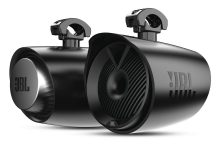Arizona Artscapes – A Brief Biography of Dale Chihuly is a tale of two sisters. In mid-May of 2009 they visited the Dale Chihuly glass exhibit that graced the Desert Botanical Gardens from Nov. 22, 2008 through May 31, 2009. Each has sent a favorite photo from the many they took of the enthralling exhibit — vibrantly colored hand-blown glass intermingled with Arizona desert flora. Thank you, Chelle and Christi Brookes for your contributions to “Arizona Artscapes.”

Dale Chihuly has been influential within the Studio Glass movement. He continues to revolutionize the art of hand-blown glass. Working in a generally free-form and unorthodox manner, the results of his approach elicit widespread admiration from the full spectrum of viewers, with one art historian calling his work “liquid light.”
Chihuly’s work is included in more than 200 museum collections worldwide including the Metropolitan Museum of Art, and the Smithsonian American Art Museum. Among the many museums in which his work has been exhibited are the Louvre’s Musée des Arts Décoratifs and the Victoria & Albert Museum, London. Some of the great botanical gardens have recently exhibited his work, such as the Royal Botanic Gardens at Kew, and the New York Botanical garden. His corporate installations include the famous ceiling sculpture at the Bellagio in Las Vegas.

Born in 1941 and raised in Tacoma, Washington, Chihuly studied interior design and architecture at the University of Washington in Seattle, earning his BA in 1965. In that same year, Chihuly blew his first glass bubble. He attended graduate school on scholarship at the University of Wisconsin, Madison where he studied glass under Harvey Littleton. That same year Chihuly received a Fulbright scholarship to study at the Venini glass factory in Venice. The following year Chihuly became part of the faculty of RISD and established a glass program there. In 1971, he co-founded the Pilchuck Glass School near Stanwood, Washington.
Through the 1970s Chihuly divided his time between RISD and Pilchuck and developed his team model of blowing glass that he had learned from Venini. During those years Chihuly also developed a core philosophy. “I am less concerned with being narrative or figurative. I am involved in the glass and the light that passes through it – the phenomenon of light being transmitted through colored glass.”
Over the years Chihuly (Arizona Artscapes – A Brief Biography of Dale Chihuly) created a wide vocabulary of blown forms. Earlier series from the late 1970s through the 1990s, such as Baskets, Seaforms, Ikebana, Venetians, and Chandeliers have been augmented with the new Fiori -or flower- forms. “Over time I developed the most organic, natural way of working with glass, using the least amount of tools that I could. The glass looks as if it comes from nature.” Some of these new flower forms are reminiscent of his early installations made at Pilchuck in the 1970s, so Chihuly has come full circle with his vocabulary of forms. In his garden installations, the artist juxtaposes his forms with those of nature establishing a direct and immediate dialog between nature, art, and light.
Major Installations
Chihuly Over Venice – 1995-96
Chihuly in the Light of Jerusalem – 2000
Chihuly in the Park: A Garden of Glass at Chicago’s Garfield Park Conservatory – 2001-2002
The Chihuly Bridge of Glass, Tacoma – 2002
Mille Fiori at the Tacoma Art Museum – 2003
Chihuly at the de Young, San Francisco, CA – 2008
Garden Installations
Chicago’s Garfield Park Conservatory – 2001
Atlanta Botanical Gardens – 2004
Royal Botanic Gardens at Kew – 2005
Fairchild Tropical Botanical Garden, Coral Gables, Florida – 2006
Missouri Botanical Garden, St. Louis – 2006
New York Botanical Garden – 2006
Phipps Conservatory and Botanical Gardens, Pittsburg, Pennsylvania – 2007
Desert Botanical Garden, Phoenix, Arizona – 2008































